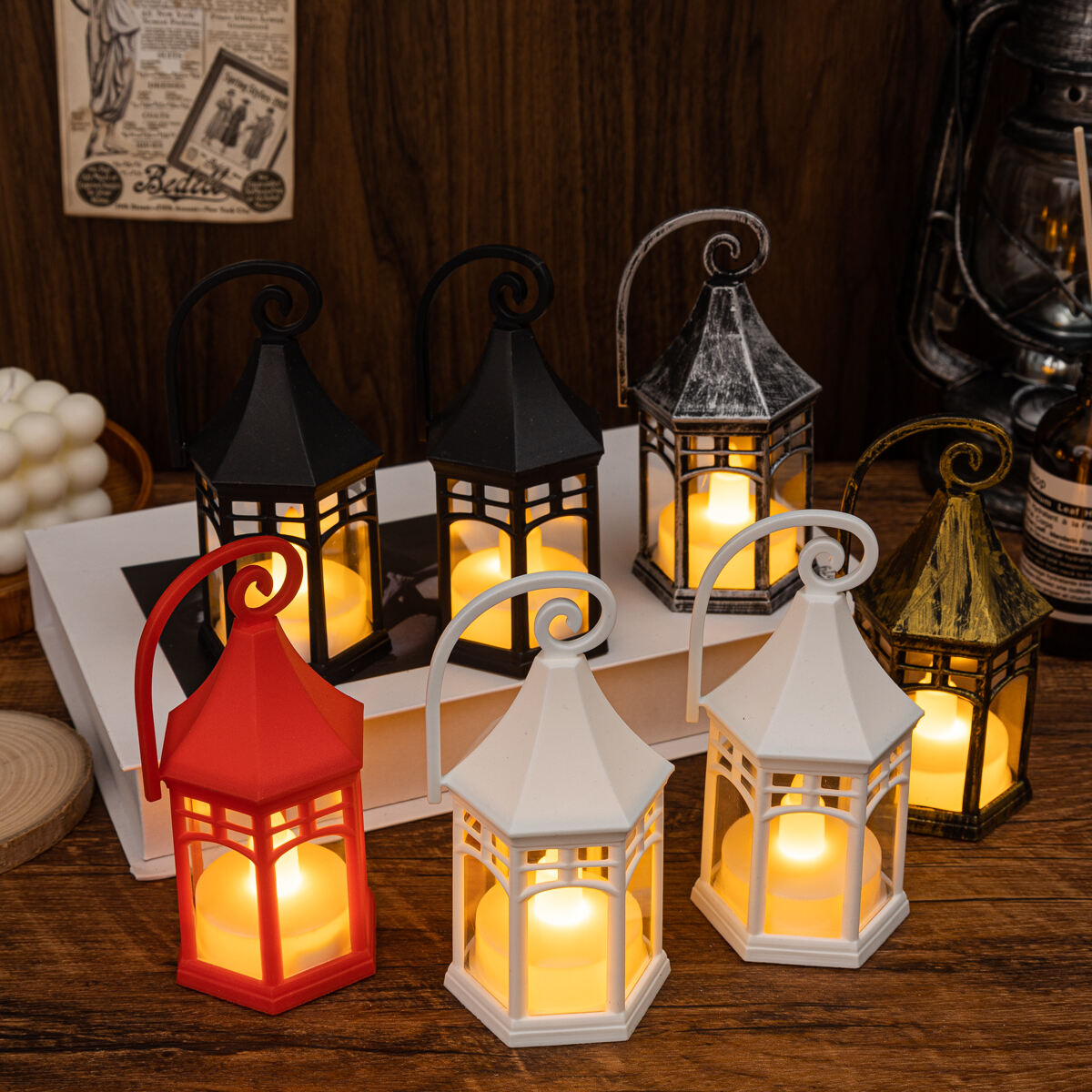A Evolução das Soluções Sustentáveis de Iluminação Externa
À medida que o nosso mundo se concentra cada vez mais em soluções energéticas sustentáveis, Lâmpadas de vento LED a Comissão propõe que a Comissão apresente uma proposta de regulamento que estabeleça as regras de execução do Regulamento (CE) n.o 765/2008. Estes dispositivos notáveis combinam a eficiência da tecnologia LED com a energia natural do vento para criar um sistema de iluminação auto-sustentável que está a revolucionar a forma como iluminamos espaços exteriores. Ao aproveitar tanto a energia eólica como a solar, as lâmpadas de vento LED representam um passo significativo para reduzir a nossa pegada de carbono, proporcionando uma iluminação fiável.
Entendendo a Tecnologia por Trás das Lanternas Eólicas LED
Componentes Principais e Funcionalidade
As lâmpadas de vento LED integram vários componentes sofisticados para gerar e manter energia. No seu centro está uma pequena turbina eólica que converte a energia cinética do vento em energia elétrica. Isso é complementado por lâmpadas LED de alta eficiência que fornecem iluminação constante consumindo potência mínima. O sistema geralmente inclui baterias embutidas que armazenam energia excedente para uso durante períodos de baixa atividade eólica, garantindo funcionamento contínuo independentemente das condições climáticas.
Sistemas avançados de gestão de energia
As lâmpadas de vento LED modernas incorporam sistemas inteligentes de gestão de energia que otimizam o consumo de energia e prolongam a vida útil. Esses sistemas ajustam automaticamente os níveis de brilho com base na energia disponível e nas condições de luz ambiente. A integração de fotosensores permite o funcionamento automático ao entardecer e ao amanhecer, enquanto controladores de carga sofisticados protegem as baterias contra sobrecarga e descarga profunda, aumentando significativamente sua longevidade.
Benefícios Ambientais e Características de Sustentabilidade
Redução da Pegada de Carbono
As lâmpadas de vento LED contribuem significativamente para a redução das emissões de carbono ao operar completamente fora da rede elétrica. Diferentemente da iluminação pública tradicional, que depende de eletricidade gerada a partir de combustíveis fósseis, esses dispositivos inovadores não produzem emissões diretas durante o funcionamento. Uma única lâmpada de vento LED pode evitar que centenas de quilos de dióxido de carbono sejam lançados na atmosfera anualmente, tornando-a uma excelente escolha para comunidades e organizações conscientes do meio ambiente.
Conservação de Recursos e Redução de Resíduos
A durabilidade e longevidade das lâmpadas de vento LED resultam na conservação substancial de recursos. Com uma vida útil operacional de 50.000 a 100.000 horas, esses dispositivos exigem muito menos substituições do que as soluções de iluminação tradicionais. Seus componentes são amplamente recicláveis, e os requisitos mínimos de manutenção reduzem ainda mais o impacto ambiental associado à manutenção regular e à substituição dos sistemas convencionais de iluminação.

Aplicações Práticas e Considerações de Instalação
Estratégias Ótimas de Posicionamento
O sucesso com as lâmpadas de LED movidas a vento depende muito da colocação adequada para maximizar a exposição ao vento e a eficácia da iluminação. Os locais de instalação devem ser cuidadosamente selecionados para garantir fluxo de ar suficiente, ao mesmo tempo que proporcionam cobertura ideal de iluminação. Áreas com velocidades médias de vento de pelo menos 11-16 km/h geralmente apresentam os melhores resultados, embora os modelos modernos possam operar eficientemente mesmo em condições de vento mais baixas, graças à tecnologia híbrida solar-eólica.
Integração com Infraestrutura Existente
As lâmpadas de LED movidas a vento podem ser integradas perfeitamente à infraestrutura existente de iluminação externa. O seu design modular permite uma instalação fácil em postes padrão e sistemas de montagem, enquanto as opções de conectividade sem fio possibilitam a integração com sistemas de gestão de cidades inteligentes. Essa adaptabilidade as torna uma excelente escolha tanto para novas instalações quanto para projetos de modernização, proporcionando uma transição suave para soluções de iluminação sustentável.
Vantagens Econômicas e Valor de Longo Prazo
Investimento Inicial e Análise de Retorno
Embora o custo inicial das lâmpadas de LED movidas a vento possa ser superior ao das opções tradicionais de iluminação, os benefícios econômicos de longo prazo são substanciais. A eliminação dos custos com eletricidade, aliada aos requisitos mínimos de manutenção e à vida útil prolongada, normalmente resulta em um retorno sobre o investimento em 3 a 5 anos. Incentivos governamentais e créditos ambientais podem ainda melhorar a viabilidade financeira, tornando esses sistemas cada vez mais atrativos para municípios e organizações privadas.
Economia em Manutenção e Operação
O design robusto das lâmpadas de LED movidas a vento reduz significativamente os requisitos e custos de manutenção. A ausência de substituições tradicionais de lâmpadas, combinada com construção resistente às intempéries e recursos de autolimpeza, minimiza a necessidade de manutenção regular. Isso se traduz em economias operacionais substanciais ao longo da vida útil do sistema, especialmente em locais remotos ou de difícil acesso.
Desenvolvimentos e inovações futuras
Tecnologias Emergentes e Melhorias
O campo da tecnologia de lanternas eólicas LED continua a evoluir rapidamente. Os fabricantes estão desenvolvendo turbinas eólicas mais eficientes, baterias de maior capacidade e sistemas de controle mais inteligentes. Materiais avançados e melhorias na aerodinâmica estão aumentando a eficiência na captação de energia, enquanto os avanços na tecnologia LED reduzem ainda mais o consumo de energia, ao mesmo tempo que melhoram a qualidade da luz e os padrões de distribuição.
Integração e Conectividade Inteligentes
O futuro das lanternas eólicas LED reside na sua integração com a infraestrutura das cidades inteligentes. Os sistemas de próxima geração contarão com opções avançadas de conectividade, permitindo monitoramento remoto, manutenção preditiva e controle dinâmico de iluminação. Essas funcionalidades permitirão uma utilização ideal dos recursos, fornecendo dados valiosos para o planejamento urbano e o monitoramento ambiental.
Perguntas Frequentes
Quão confiáveis são as lanternas eólicas LED durante períodos de vento fraco?
As lâmpadas de vento LED modernas são projetadas com sistemas híbridos de energia que frequentemente incluem painéis solares e baterias de alta capacidade, garantindo funcionamento contínuo mesmo durante períodos de baixo vento. Os sistemas de armazenamento de energia normalmente fornecem 3 a 5 dias de alimentação de reserva, tornando-os altamente confiáveis em diversas condições climáticas.
Qual manutenção as lâmpadas de vento LED exigem?
As lâmpadas de vento LED requerem pouca manutenção em comparação com sistemas tradicionais de iluminação. Inspeções regulares dos componentes da turbina eólica, limpeza dos painéis solares (se equipados) e verificações ocasionais da bateria geralmente são suficientes. A maioria dos sistemas é projetada para operar por vários anos com apenas manutenção básica.
As lâmpadas de vento LED são adequadas para áreas residenciais?
As lâmpadas de LED para vento são bem adequadas para áreas residenciais, particularmente em comunidades que focam no desenvolvimento sustentável. Os designs modernos incorporam recursos de redução de ruído e elementos estéticos que os tornam compatíveis com ambientes residenciais, ao mesmo tempo que oferecem soluções de iluminação eficientes e ambientalmente amigáveis.
Sumário
- A Evolução das Soluções Sustentáveis de Iluminação Externa
- Entendendo a Tecnologia por Trás das Lanternas Eólicas LED
- Benefícios Ambientais e Características de Sustentabilidade
- Aplicações Práticas e Considerações de Instalação
- Vantagens Econômicas e Valor de Longo Prazo
- Desenvolvimentos e inovações futuras
- Perguntas Frequentes
 EN
EN
 AR
AR
 FR
FR
 DE
DE
 IT
IT
 JA
JA
 KO
KO
 PT
PT
 RU
RU
 ES
ES
 LV
LV
 LT
LT
 VI
VI
 TH
TH
 MS
MS


